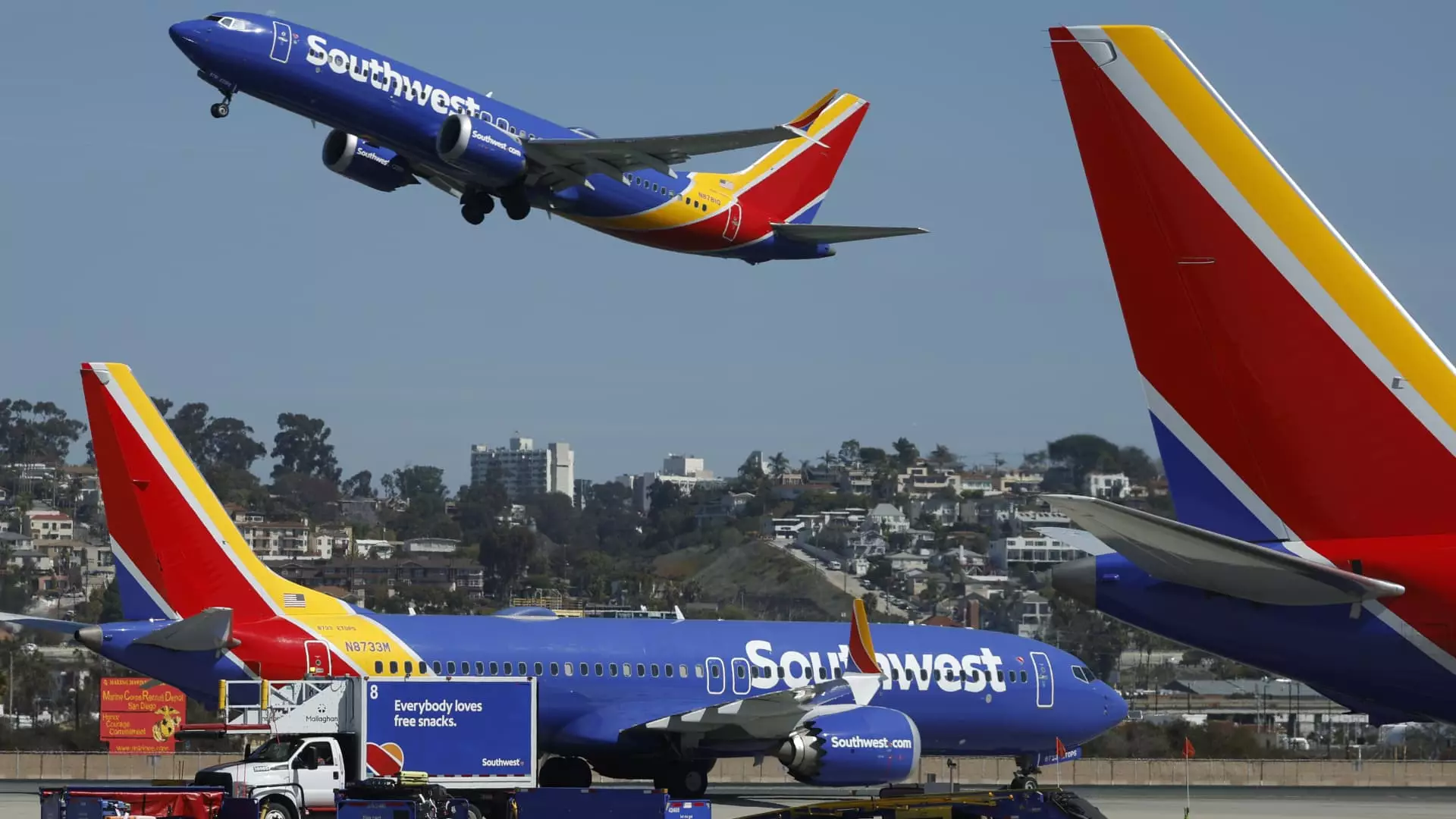In a surprising turn of events, Southwest Airlines is exploring a significant transformation aimed at attracting high-spending customers. CEO Bob Jordan’s recent comments outline a willingness to adapt the airline’s offerings for the future, a shift that could reshape the landscape of low-cost flying. This proactive shift is indicative of the airline industry’s ongoing evolution, particularly in response to intense competition and changing customer expectations. Many may question whether Southwest, a company that has built its identity around low fares and no-frills service, can authentically pivot towards a more luxurious offering without losing its essence.
For over half a century, Southwest Airlines has thrived on the premise of accessibility and simplicity. With policies like open seating and free checked bags, it established a distinct brand identity that resonated with value-conscious travelers. However, the landscape has undeniably changed. Competitors are raising the bar with premium services, lounges, and comfortable seating, which undoubtedly lures away some of the most lucrative clientele. This is alarming for an airline that has always prided itself on being a disruptor in the industry.
Pressure from Competitors
Jordan mentioned that the airline is aware of customers choosing other carriers for the amenities they desire. This acknowledgment of external pressure is telling. It reveals a critical vulnerability for Southwest Airlines: to retain its customers, it must not only maintain affordability but also broaden its service spectrum to meet rising demands. As the industry edges closer to luxury flying even at budget prices, the push for change is unmistakable.
The airline’s actions signify a response to an activist investor’s call for increased revenue. Therein lies a dual challenge — balancing the longing for higher profitability without compromising the low-cost model that endeared it to millions. The struggle to maintain affordable air travel while fostering an appeal to luxury speaks volumes about the intrinsic challenges within the airline sector. If Southwest misses the mark in adapting, it risks alienating its loyal customer base, a gamble that might yield detrimental consequences.
The Competitive Arms Race
American Airlines’ announcement to nearly double its lounge space at Miami International Airport epitomizes the competitive arms race among air carriers, where luxury amenities are no longer optional but essential. Similarly, Delta and United Airlines have not just raised service levels; they are crafting entire experiential journeys that cater to the affluent subset of travelers. This dramatic pivot toward luxury among competitors places immense pressure on Southwest to re-evaluate its traditional offerings.
Jordan’s mention of Nashville as a key market for luxury is particularly interesting. This indicates a deep understanding of the market dynamics at play, especially in a city experiencing explosive growth. The desire for premium experiences among Nashville’s affluent customers cannot be ignored, and Southwest must act swiftly to seize these opportunities lest it continue to lose market share.
Long-Haul Flights on the Horizon?
The notion of Southwest Airlines venturing into long-haul flights presents a staggering proposition. While the idea of flying across the Atlantic may make devoted customers rejoice, it begs a critical examination of whether this aligns with the airline’s storied identity. Historically, the company has relied heavily on Boeing 737s, which have served them well for domestic journeys, but adapting to international routes would require a substantial logistical and financial commitment.
Jordan hinted that while there is no commitment yet, the airline is open to examining its prospects regarding longer-haul aircraft. This indicates an ambitious yet cautious approach toward expanding its horizons. However, this opens the broader discussion of what constitutes a “Southwest way” of flying. Does abandoning its core identity in pursuit of luxury and international routes compromise the very essence of what it means to travel with Southwest? If customers begin associating the airline with luxury instead of affordability, the loss of its brand identity could be a potential pitfall.
Charting a New Course
As the economy remains tenuous and airfare drops, Southwest seems to be plunged into a profound juxtaposition. While the airline has softened its no-frills stance to accommodate basic economy and bag fees, a shift towards premium options could be both an opportunity and a minefield. The challenge will be defining what luxury means within their context, while also pushing against the limits of their established ethos.
Ultimately, Southwest Airlines’ journey towards a more multifaceted offering is fraught with complexities. The potential for growth exists, but so does the risk of alienation among core customers. Striking the right balance will be critical, as they navigate the waters of an increasingly competitive airline landscape.

